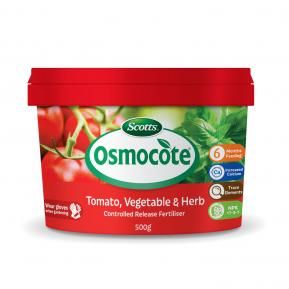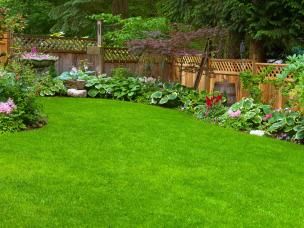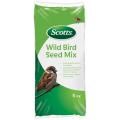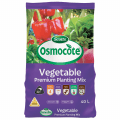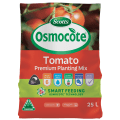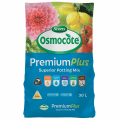May Gardening: Your Monthly Garden Guide
There can be no doubting this month that Winter is almost here! Days are shortening, nights are colder and brisk winds encourage us to rug up before heading outside. There's still so much to enjoy in the garden this month, and it's your last chance to get those bulbs in the ground before the soil gets too cold. Find out the best plants to plant in May for a lively garden that prevails in New Zealand's unpredictable winter elements.
May is also “chrysanthemum month” when we celebrate Mother’s Day with bunches of extravagant blooms from this ever-popular perennial which is at its peak in late autumn.

What to plant in May and other May gardening tips
May’s a time when some of us stay indoors a bit more and get to enjoy the rewards of our hard work in the garden. After last month’s harvest, you might be tucking into hearty soups, roasted root vegetables and apple crumbles made with homegrown goodness. But there’s still plenty to do outside in May. Whether you’re keen to know what to plant this month or just after a few gardening tips for the last month of autumn, check out the sections below to help keep your garden ticking along through the colder months.
Your April harvest may keep you busy well into May, so keep an eye out for any fruit and veggies that are ready to pick. If the garden’s looking a bit empty after all that harvesting, don’t worry - there’s still plenty you can plant in May, including fruit trees. It’s also a good time to give your veggie patch a bit of maintenance to see your plants through winter.
Vegetables
If you’re wrapping up your autumn harvest and your veggie patch is starting to look a bit bare, don’t worry - there’s still plenty you can get growing in May. You might even have a few last crops ready to pick, so keep an eye out for anything that’s good to bring into the kitchen.
What vegetables to plant in May
The following vegetables will gladly stand a cold spell - in fact, some will emerge from winter with strongly established root systems, raring to go in the spring:
Bok choi, Brussels sprout, Carrot, Cabbage, Cauliflower, Coriander, Leek, Kale, Lettuce, Garlic, Onions, Radish, Parsley, Rocket, Rhubarb, Silverbeet, Spinach.
Growing vegetables in May
- Water deeply at least once a week if the weather is dry.
- Hand pull or hoe out weeds as they appear – they compete for nutrients and moisture and may also harbour pests that could attack your crops.
- Keep an eye out for aphids and other insect pests, especially on herbs and vegetable and flower seedlings. Use a general garden insecticide such as pyrethrum to control them. Don’t forget to spray the undersides of leaves too.
- Watch for the caterpillars of the White Cabbage Butterfly on cabbage, cauliflower, broccoli and other brassicas. Pyrethrum will assist or try a cabbage dust.
- Use Scotts Quash Slug & Snail Killer and slug traps or baits to protect young seedlings.
What vegetables to harvest in May
There’s not a lot to harvest from the veggie patch now. Harvest bok choi, Brussels sprout, beetroot, broccoli, carrot, cabbage, celery, cauliflower, coriander, leek, kale, lettuce, onion, mesclun, parsley, radish, peas, rhubarb, silverbeet, rocket, spring onion, spinach.
Fruit
If you’ve been wondering whether you can plant fruit trees in May, the answer’s a definite yes. Autumn and winter are great times to pick up bare-root fruit trees, which are often stronger and come in a wider range of varieties. Elsewhere in the garden, there’s still plenty to harvest and a bit of maintenance to keep on top of too.
What fruit to plant in May
May is a great time to plant fruit trees and canes as the soil is still warm, and plants are entering a dormant period. Those that can be planted now include:
Pears, Apples, Blueberry, Strawberry, Orange , Lemon, Lime , Mandarin, Feijoa.
What fruit to harvest in May
There may still be some crops of late season fruits maturing. These include:
Apples, Pears, Selected oranges, Passionfruit, Feijoa.
Apples and pears keep well if wrapped individually in newspaper and stored somewhere cool and dark. Check them every so often for any signs of rot, as one bad fruit can spoil the lot - remove anything that’s starting to go off.
Flowers and Bulbs
What flowers and bulbs to plant in May
The last seedlings of pansies, violas, bellis, calendulas, cinerarias, cornflowers, polyanthus and primulas should be planted early in the month in cool areas. In warm areas marigolds, impatiens, delphiniums, Iceland poppies, polyanthus, snapdragons and sweet peas will all do well.
Tulip bulbs that have been in the fridge for a few weeks can be planted from the last week of the month. It's also time to get your hyacinths in the ground.
Growing flowers in May
-
After dahlias and chrysanthemums have finished flowering, cut plants down to encourage new shoots, which can be taken as struck as “green cuttings” in spring.
-
It's a good idea to lift dahlia tubers after the first frost and store them in dry compost in a cool but frost-proof place. It’s also time to clear your sweet peas, but save some seeds first so that you can sow them next year – store them in an envelope in a dry place.
-
Finally, it’s a good time of year to replenish potting mix in containers where bedding plants and bulbs were planted earlier in the year. This will provide fresh nutrients to incoming plants and ensure that pests and diseases are disturbed.
Indoor plants November
-
Plants inside the home assist in purifying the air as well as lending a touch of greenery to your living areas.
-
Over the cooler months, make sure plants are kept out of draughts and away from heaters and air conditioners that can dry the atmosphere.
-
Your plants will thrive in temperatures and humidity levels that are most comfortable for you. If your home is heated, place a saucer or bowl of water near your plants but don't stand pots in water!
-
Occasionally wipe leaves with a damp cloth (no detergents or oils, please!) to remove dust and dirt that can affect photosynthesis.
-
Keep them growing well with ready to use Scotts Osmocote Pour+Feed Indoor Plants – no mixing required.
May lawn care
- To improve drainage, aerate your lawn now even if you did it in March or April. This time, use a coring machine to remove larger plugs of soil. This not only helps oxygenate your lawn but also assists it to drain and dry out after rain.
- If your grassed area is small, a stout-pronged garden fork worked back and forth, in rows about 300mm apart, will achieve a similar result.
- If your lawn remains very wet after moderate to heavy rain, then you may need to install a drainage system. This can be done with minimum disturbance using a narrow trenching spade or machine and slotted polypiping that then connects to a sump or stormwater drain.
- Watch for moss in shady, moist areas of lawn. A solution of iron sulfate (30 grams in 4.5L of water) applied as a spray or with the watering will help control it. Re-apply if necessary.
- Top dress with Scotts Lawn Builder Lawn Soil.
- Water entire lawn area, if permitted, to settle topdress mix.
- Fertilise with Lawn Builder All Lawn Types Slow Release Lawn Food or Lawn Builder Extreme Green Lawn Food or hose-on equivalent.









